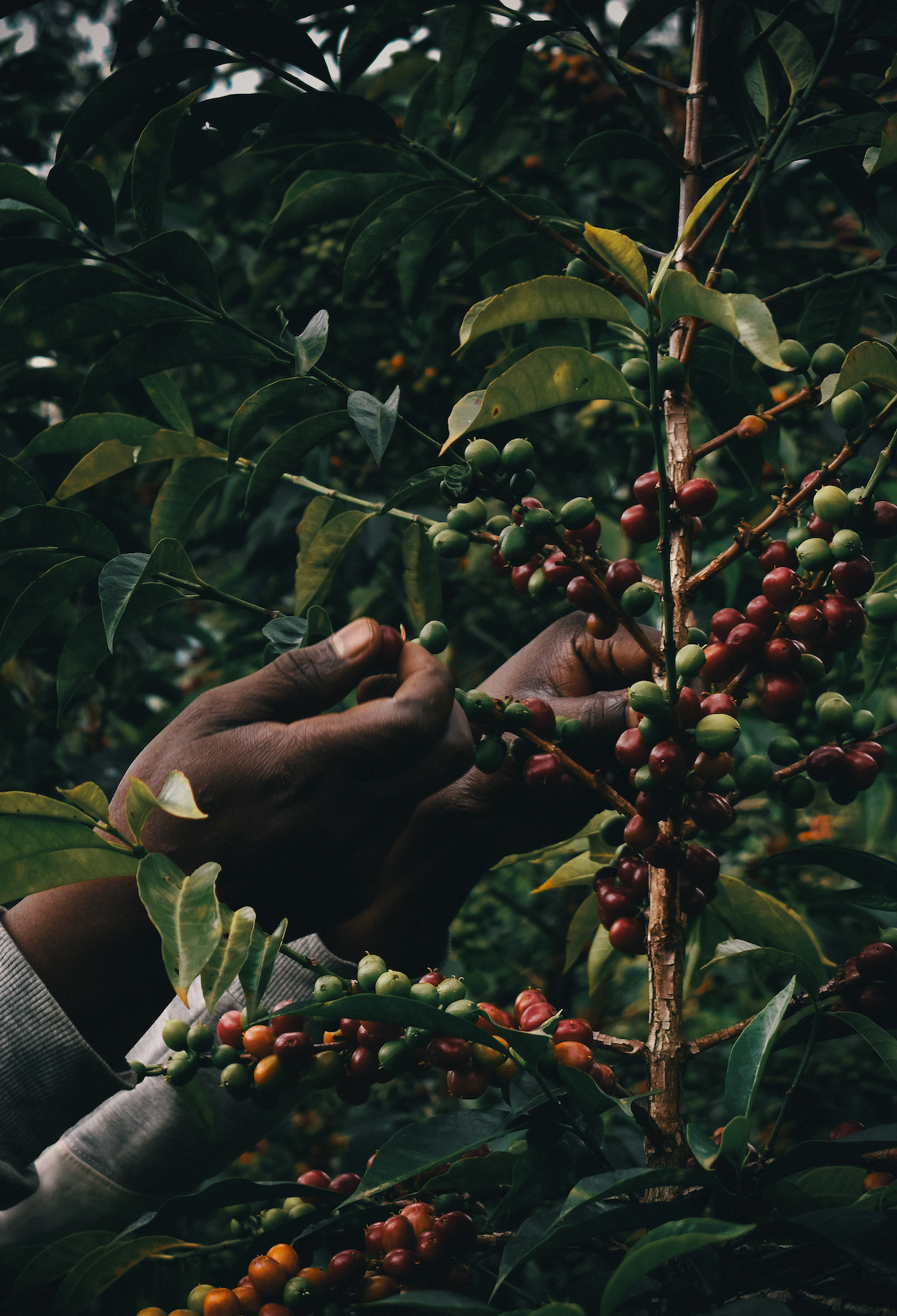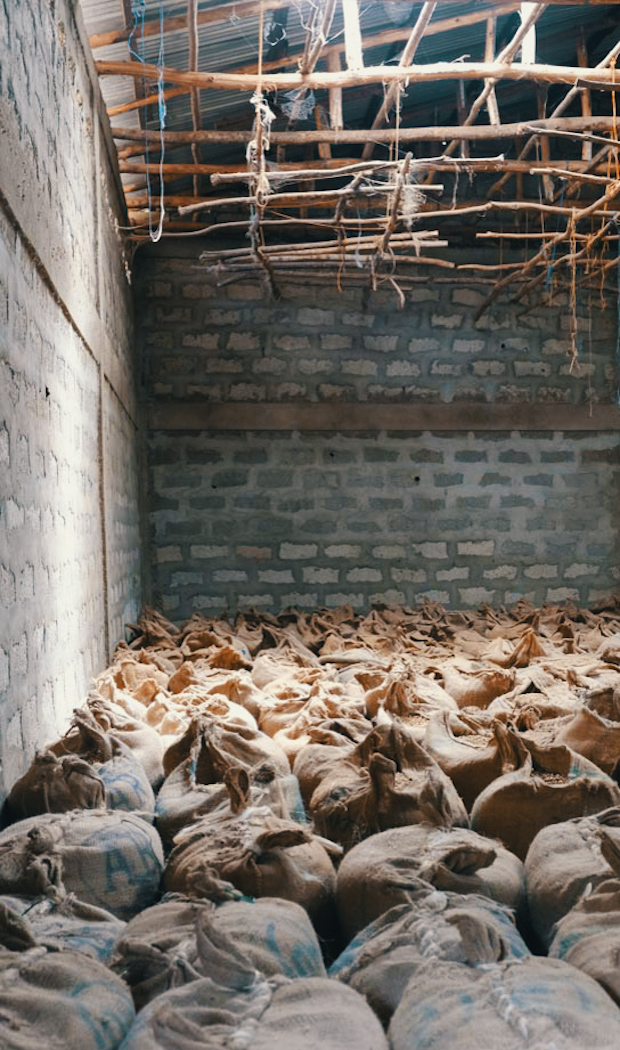As we head into the Ethiopian coffee buying season, there are a few burning questions on every coffee person’s mind.
Ethiopia’s current challenges include a civil war, 30%+ inflation in 2021, a significant coffee supply shortage, a rash of propaganda and inconsistent media coverage.
As representatives of a boots-on-the-ground Ethiopian- and American-owned coffee company, Catalyst Trade, my co-founders and I considered this to be a good time to share our perspectives.
In late January, we hosted a Founder Q&A on the Ethiopia coffee sector virtually. Attendees from all over the world tuned in and shared questions and insight, leading the discussion into topics such as corruption, economics and price mobility.
Here are some of the key questions along with a few additional thoughts from the Catalyst Trade team, which includes Zelalem Girma Bayou (Relationships & Processing Director), Michael McIntyre (Sourcing & QC Director) and me (CEO).
We hope this might lead to more questions and a deeper understanding of the challenges facing the Ethiopian coffee sector.
How Does the Conflict in Ethiopia Affect the Coffee Industry as a Whole?
Ethiopia is the birthplace of coffee and nearly all of us who are coffee professionals or simply love drinking coffee have a special place in our hearts for it. On a human level, when hearing about the conflict and the fallout with innocent people throughout the northern part of the country, we are deeply grieved and want to help.
Zelalem points out that in a real way the conflict between the Ethiopian National Defense Force and the TPLF is problematic for the coffee supply chain because it creates a ripple effect of economic, logistical and political issues that are deeply challenging to navigate.
One key result is the steep inflation Ethiopia is currently experiencing, with estimates of about 35% in December 2021. Critical inputs for coffee processing have doubled, tripled or more in cost, as have basic supplies such as nails for drying beds or fuel for trucks.
There is no simple answer here, and the truth is that the global coffee industry will be impacted significantly by this, as well as by the 2021 shortfalls and other supply issues.
However, we are confident in the future of Ethiopian coffee, and the 30 million people who make their living in coffee, from pickers in the field to day laborers in dry mills. We must find ways to properly support these people and the wonderful and diverse coffees they produce.
Why is Coffee Pricing from Ethiopia Rising So Much?
Nothing happens in a vacuum, so even for specialty coffee traded on a cost basis instead of on a differential, the C Market and the global coffee shortfalls will inevitably impact coffee pricing in a niche origin like Ethiopia. Supply and demand always have an inverse relationship: the lower the supply, the higher the price.
According to the December 2021 USDA Coffee Report, the global coffee market has a forecasted supply shortfall of 8.5 million bags of coffee for this crop year. To put that in perspective, that’s more than double the annual coffee exports of Ethiopia. Ethiopia itself also experienced an epic shortfall against contracts filed, resulting in lots of interesting movement in pricing.
When you factor in the aforementioned inflation — which has exponentially increased prices for coffee-production essentials — the more reasonable question might be, “Why hasn’t coffee pricing risen higher?”
Obviously, the above information barely scratches the surface of why coffee prices are so much higher in Ethiopia, but I would like to point to a key, exciting fact here: possibly the greatest direct reason that coffee prices have risen so much in Ethiopia is due to the increase in cherry prices.
In parts of Sidama, where we work, for example, last year things felt expensive at 34 birr/kg. This year, they are nearly reaching 70 birr/kg. For once, smallholder producers are on the winning side of the economic equation, though history suggests this will not last long.
How is the 2022 Harvest Tasting?!? And Crop Predictions?
Yes, 2022 is a lower-harvest year after 2021 was a bumper crop in many parts of Ethiopia; and yes, in some shortage of rain has stretched out or in other ways influenced the harvest. However, we are observing some really exciting things in certain parts of Ethiopia!
Despite our assessments that, due to a number of factors, coffee quality and volume are down across the board in Ethiopia, we also have found that cup quality of coffees from a number of our partners is also up, in some cases by a full point or two.
We’ve also seen increases in bulk density, by as much as 10% in some coffees, leading to potential increases in dynamic qualities and intensities.
Michael and Zelalem theorize this is likely due to a number of factors, including climate change. We, along with our customers, have noticed an uptick in quaker content in coffees the last few years, even in the highest cup quality lots. This has coincided with changes in density, perhaps due to intense rains restricting nutrient intake in coffee shrubs.
Catalyst Trade’s team has spent the past five months or so in the field, taking in cherries and processing coffees, running trainings and then doing follow-ups. Sadly, due to economic factors, many of the small suppliers in Ethiopia were unable to meet their usual production levels, with some down by as much as 80%.
This has caused them to focus increasingly on the quality of what they can produce; and although the higher prices don’t offset the loss entirely, every little bit helps.
With the exception of certain focused projects like these, pressure on washing stations and other external factors throughout Ethiopia to have led to some aggressive purchasing of cherries with less regard to price and quality. This has arguably contributed to a decline in cup quality and coffee health markers such as water activity and moisture content.
As with any coffee-producing country or region, relationships remain a critical factor in quality discovery and assurance, and this has proven to be a particularly interesting year in Ethiopia!
What is Happening with Experimental Lots in Ethiopia?
The perspective in Ethiopia on experimental processing has shifted 180 degrees over the past few years. I remember in the 2016 harvest when we produced the first honeys from areas of Yirgacheffe and Kochere, and how we had to physically bring buyers to the Ethiopian Coffee & Tea Authority to prove there would be a market for the coffee, then get multiple layers of approval just to export the coffee.
However, when experimental Ethiopian coffees began to make waves in the competition circuit, and when Cup of Excellence began to operate in Ethiopia, the profit potential of experimental processing became clear. Now, minimum mandated prices for experimentally processed coffee have skyrocketed, more than doubling what they were a couple weeks ago.
In fact, many producers have adjusted their strategies to focus exclusively or primarily on experimental processing lots. This may pose some risk due to the inherent technical challenges related to quality processing and the fact that the price and value of experimental lots is predicated on its exclusivity and rarity.
Ultimately, the pendulum will likely swing closer to the middle in a while; but for now, the global market may witness a deluge of mediocre experimental lots from Ethiopia in addition to the truly special lots.
With All This Change, Where Are We Headed in the Coffee Industry?
We believe that with prices skyrocketing and political and logistical challenges ballooning, now is the time we’ve all been training for in the specialty coffee industry.
If we are truly to be supportive of coffee producers in the short term and long term, we must open our minds, learn as much as possible about what’s happening and provide support for good work with actual dollars.
Higher prices will hopefully accompany other value additions such as higher cup scores and better traceability, which allows us to carry this through to consumers with a unified story.
We stand at this precipice together. Even though the Ethiopian legacy is millennia old, I believe that the story of Ethiopian specialty coffee is just beginning.
[Editor’s note: Daily Coffee News does not publish paid content or sponsored content of any kind. Any views or opinions expressed in this piece are those of the author and are not necessarily shared by Daily Coffee News or its management.]
Emily McIntyre
Founder and CEO of Catalyst Trade, Emily McIntyre is a serial coffee entrepreneur and journalist focused on re-inventing specialty coffee sustainability. Based in Portland, Oregon, Emily has lived in Ethiopia and consulted in nearly every aspect of the coffee supply chain from farm to the cafe. Learn more at www.catalyst-trade.com.
Comment
5 Comments
Comments are closed.










Thankyou
For some one non-Ethiopian talk about non-war issue.
Your post surely brings awareness to the impact of war, oppression, and inflation all over the world. The Ethiopian coffee legacy is to be admired no doubt.
We, too, share the love of specialty coffee from all corners of the world at https://gallacoffeeblog.co.uk/
We unify with you in hopes that a new chapter will be written for them and their dedicated work.
Coffee must be Ethiopia’s Brand
By: SintayehuGirma Aytaged
Ethiopian Coffee&Tea Authority Ethics &Anti corruption Directorate Director
[email protected]
Phone number+2510900065962
In the 21st century all world integrated in strong market linkage. Especially in this globalization season most countries tries to promote and sell their unique products as a brand of their own country brand. If a country didn’t build its own brand for a unique product it allows others to talk negatively.
Warren Buffet thefamous 3rdbillionaire of the world tells ”it takes 20 years to build brand/good will but it takes only 5 second to destroy it.” He continued “it will be tolerable foe wasting money in one’s organization but there is no any tolerance against our good will/brand of our organization.” This famous billionaire takes the global economic crisis as good opportunities to build his company brand. He believed that the main reason of the 2008 global economic crisis is injustice tax payment of developed countries around the world. To elaborate this idea he mention his own experience and say”when the income tax rate of America increases the tax rate will be decreases this is the cause of the economy gay between rich and poor“ he proved that when Buffet pay 15% of income tax where as his secretary pays 35%. Buffet criticized this is completely injustice. There are some wise people, companies and countries thatuse this situation to bring acceptance to their organization.
In this globalization season, many countries promote theirbrand to be competitive in the global market and win the opportunity. All governmental organization, private sector and civil society work collaboratively to identify one unique product/service to represent their country and build brand to get acceptance throughout the world. They build asystem with all stakeholders to evaluate the branding process and its achievement. As brand professional argues“It is very common yet wrong Using different brand for a country’s product/ service because Customers couldn’t identify the product easily.” For instance, tourism might be the brand of the sector but it cannot be the brand of the country because it will not be effective. Youcan take Egypt as an example, when Egypt promote its tourist attraction it include the national and traditional dishes but this situation create discomfort among its tourists and they are complainingabout it. As reports says it is advisable for countries to identify relatively best product to represent the country as a brand; regarding this our country Ethiopia must choose one icon product or service among coffee, Teff or athletics etc. We have to work on this area and start applying the branding system to be strong competitor in the world.
The writer of this article believes that due to a number of reasons coffee must be the icon brand of Ethiopia. Some of the reasons are listed below
Ethiopia is the origin land of Coffee
The word “Coffee” in English word and “Bunna” the Amharic word is easy to catch and pronounce.
3 billion cup of coffee is drunk throughout the world daily.
100 billion dollar business transaction has made on coffee next to petroleum.
Coffee is known as energizer drink it cannot be substitute byother crops or product.When we compare coffee with other crops its price fluctuation rate is very rare.
According to a reportfrom the total pupation 18 years and above of the American people 50% of theme drinks coffee in daily basis.
In addition to this china is a rapidly growing country, if we can take at least 10% of Chinese who drinkcoffee daily, it will create new market opportunity. To support this we have to give free coffee forChinesewho live in Ethiopia.
To make strong we have to create different coffee day, held workshop and present coffee in international meeting. It helps to promote coffee. We can use famous athletes and celebrities to promote Ethiopian coffee and build our brand.
The product/ service that represent the country as a brand must be knownand utilized by the over the world otherwise it will not be effective. When we see the Ethiopia case coffee is knownall over the world so there so not any product to compare coffee. It is reported thought international media that Ethiopians coffee has unique test and aroma and also researchers proved that Ethiopian coffee is also good to our health.
Generally, it is very important to use the following public Relation tools to promote the Ethiopia coffee quality.
1. Let famous people and athletespromote coffee on the international Medias.
2. Use local and international Media’s reports and monitor the message and invite the reporters to come in Ethiopia and visit the coffee production process.
3. Organize huge events and exhibition and promote Ethiopia coffee
4. Engage all governmental leaders and ambassadors to create global market linkage.
5. Advertize on less expensive international media.
6. Promote Ethiopian coffee in local governmental and private media, ministers’office, tourism organization, investment commission and the Ethiopian tea and coffee development and marketing website, social media etc.
7. Work with an organization that works hard on the benefit of coffee producers, like Oxfam.
8. Work with international public relation institute to promote coffee in highly technology and professionalism.
It is better to participate all stakeholders and discussed on the country brand research and come to a common understanding. It is also very important to establish a committee working on the country branding.
According to Wally Alina, there are seven steps for a country branding promotion.
1. Participate governmental body, industry representatives, artistes,educators and media representative to create branding program.
2. Conduct research on how local and foreign citizen perceive Ethiopian coffee.
3. Discuss and compare the result with highly influential people by analysis the strength and weakness of the country.
4. Participate professionals and brand counselors to create a central brand establishment strategy this main central strategy must be strong and easy to catch to identify the county good will/image.
5. Identify different technique to promote the branding strategy and our logo.
6. The content of the massage that is going to be promoted should be interesting and attractive to catch customers’ attention and it must be build from different sectors like tourism, investment attraction and export…
7. Established laizn program to link with the branding team.
좋은 커피 뉴스 부탁합니다
I am impressed by the way the current situation in Ethiopia and root causes of the problems were clearly explained. I have learnt a lot. I would like to thank you very much for your excellent article! With your permission, I would like to translate this into Japanese and distribute it to people concerned in the Japanese coffee industry. I am a professional Japanese translator certified by the National Accreditation Authority for Translators and Interpreters (NAATI) in Australia. I am myself also engaged in the coffee industry.